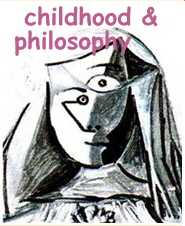how students understand art: a change in children through philosophy
Abstract
This study deals with an exploratory research about understanding of art in students of different age, grades and kind of schools attended. In particular, we analysed how beliefs and reflections about art and aesthetical experiences expressed during a cross-age interview, changed in elementary school children involved for two years in a UE Project (Socrates - Comenius, Action 1) titled “Philosophy and European Contemporary Art”. The activities are based on guided philosophical discussions, transforming the classroom in a “community of inquiry”, according to the methodology of “Philosophy for Children” program (Lipman, Sharp, & Oscanyan, 1980). The elementary school group was tested pre and post the program activities. A qualitative analysis of the students’ answers was carried out, considering the data with respect to the five stages of art understanding defined by Micheal Parsons (1990) which correspond to different beliefs about art in the subjects. Key-words: Philosophy for children; qualitative analysis; art educationDownloads
I dati di download non sono ancora disponibili.
Downloads
Pubblicato
2010-04-23
Come citare
SANTI, Marina. how students understand art: a change in children through philosophy. childhood & philosophy, Rio de Janeiro, v. 3, n. 5, p. pp. 19–33, 2010. Disponível em: https://www.e-publicacoes.uerj.br/childhood/article/view/20507. Acesso em: 9 mag. 2025.
Fascicolo
Sezione
articles




